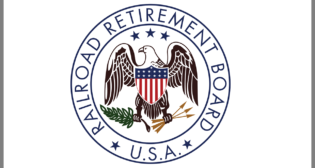
Report: The Portal Project Advances in California
Written by Marybeth Luczak, Executive Editor
Transbay Joint Powers Authority is leading The Portal project, which is slated to bring Caltrain, and potentially the California High-Speed Rail Authority’s system, to San Francisco’s Salesforce Transit Center. (Transbay Joint Powers Authority Rendering)
The Federal Transit Administration (FTA) has committed $3.38 billion to The Portal Project, bringing Caltrain commuter rail to San Francisco’s Salesforce Transit Center, the San Francisco Examiner reported May 11.
The Transbay Joint Powers Authority (TJPA), which is managing the approximately $7.5 billion project, announced the funding during a Board of Directors meeting on May 9, according to the newspaper, which noted that The Portal Project will require local matching funds. TJPA is working on The Portal in cooperation with five other agencies—Metropolitan Transportation Commission, San Francisco County Transportation Authority, Peninsula Corridor Joint Powers Board (Caltrain), California High-Speed Rail Authority (CHSRA), and the City and County of San Francisco—through the San Francisco Peninsula Rail Program Memorandum of Understanding, a regional collaboration model to formally deliver the project, according to TJPA. The project is in FTA’s Capital Investment Grants Program; it cleared federal and state environmental requirements in 2019 with a federal Record of Decision and the National Environmental Policy Act and California Environmental Quality Act.

The Portal, over 30 years in the making, is said to be part of TJPA’s vision “to deliver seamless transportation service” through its multimodal six-level transit hub, the Salesforce Transit Center, in downtown San Francisco (see map, above; download TJPA factsheet, below). It is slated to extend Caltrain service from Fourth and King streets and ultimately, the California High-Speed Rail system, to the Salesforce Transit Center and connect 11 transit systems from the Bay Area and Southern California. TJPA “has spent $2.3 billion building the Salesforce Transit Center, currently a busy bus station south of Mission Street that serves eight transit systems” and includes retail outlets and 5.4-acre rooftop park, reported the San Francisco Examiner.
According to TJPA, the 1.3-mile rail extension (1.95 miles of total construction length) will be constructed principally below grade using cut-and-cover and mined tunneling methods underneath Townsend and Second streets. The project includes an underground station at Fourth and Townsend streets along with the Salesforce Transit Center’s basement levels, six structures for emergency exit, and ventilation along the alignment, utility relocation, and rail systems work. The underground station at Fourth and Townsend will serve Caltrain riders, according to TJPA, which noted that the station entrances along the north and south sides of Townsend Street will lead to two levels below grade: a concourse mezzanine and a train platform. The concourse will accommodate passenger amenities such as ticketing; maps and schedule information; and restrooms. It will also house mechanical and electrical rooms and Caltrain staff areas. The train platform will feature a center platform with one passing track on the south side.
According to TJPA, the “already built two-level trainbox” at the Salesforce Transit Center will serve as the lower concourse and train platform levels when The Portal is complete. At its east end, it will connect to the intercity bus terminal and a pedestrian tunnel leading to the Embarcadero BART/Muni station, approximately one block north of the Transit Center. Along with ticketing and passenger waiting areas for rail and support spaces, the lower concourse will contain retail space, according to TJPA, while the train platform will include six tracks and three platforms for Caltrain commuter and high-speed rail service. Back-of-house support spaces will also be built on the train platform level.
The San Francisco Examiner reported that TJPA officials expect the rail extension project to enter service in 2032 or 2033.
The FTA funding announcement, the newspaper said, follows a March announcement that President Joe Biden’s administration was requesting $500 million for the project.
“With other local and state funding sources already committed, the project now has over two-thirds of the estimated cost covered, said Adam Van de Water, executive director of the Transbay Joint Powers Authority, in a presentation to his agency’s board of directors” on May 9, the San Francisco Examiner reported. “Next, the agency must figure out how to close the remaining $2.75 billion funding gap. Staff are working with … governmental entities at the local, regional, state and federal levels to find the needed money. The agency hopes to get $1 billion from the state, but where that will come from remains to be seen. The state’s greenhouse-gas emissions cap-and-trade program does not currently have the capacity for such a significant investment, said Shima Mirzaei, TJPA’s chief financial officer.”
According to the San Francisco Examiner, TPJA officials “hope to benefit from legislation recently introduced by two state senators, Scott Wiener and Aisha Wahab, that would authorize the regional Metropolitan Transportation Commission to propose a November 2026 Bay Area ballot measure that would — among other things — provide transportation funding, particularly to help services that have seen lower use since the COVID-19 pandemic.”
The newspaper reported that TJPA officials “had hoped to sign a full-funding grant agreement with the Federal Transit Administration next spring, but they said they now believe it will take until at least mid-2026.” TJPA, the paper noted, has shortlisted three design and construction teams and plans to issue a Request for Proposals at the end of 2024. According to the San Francisco Examiner, TJPA has “set aside $340 million to buy ten properties and 18 easements to make way for the project.”



